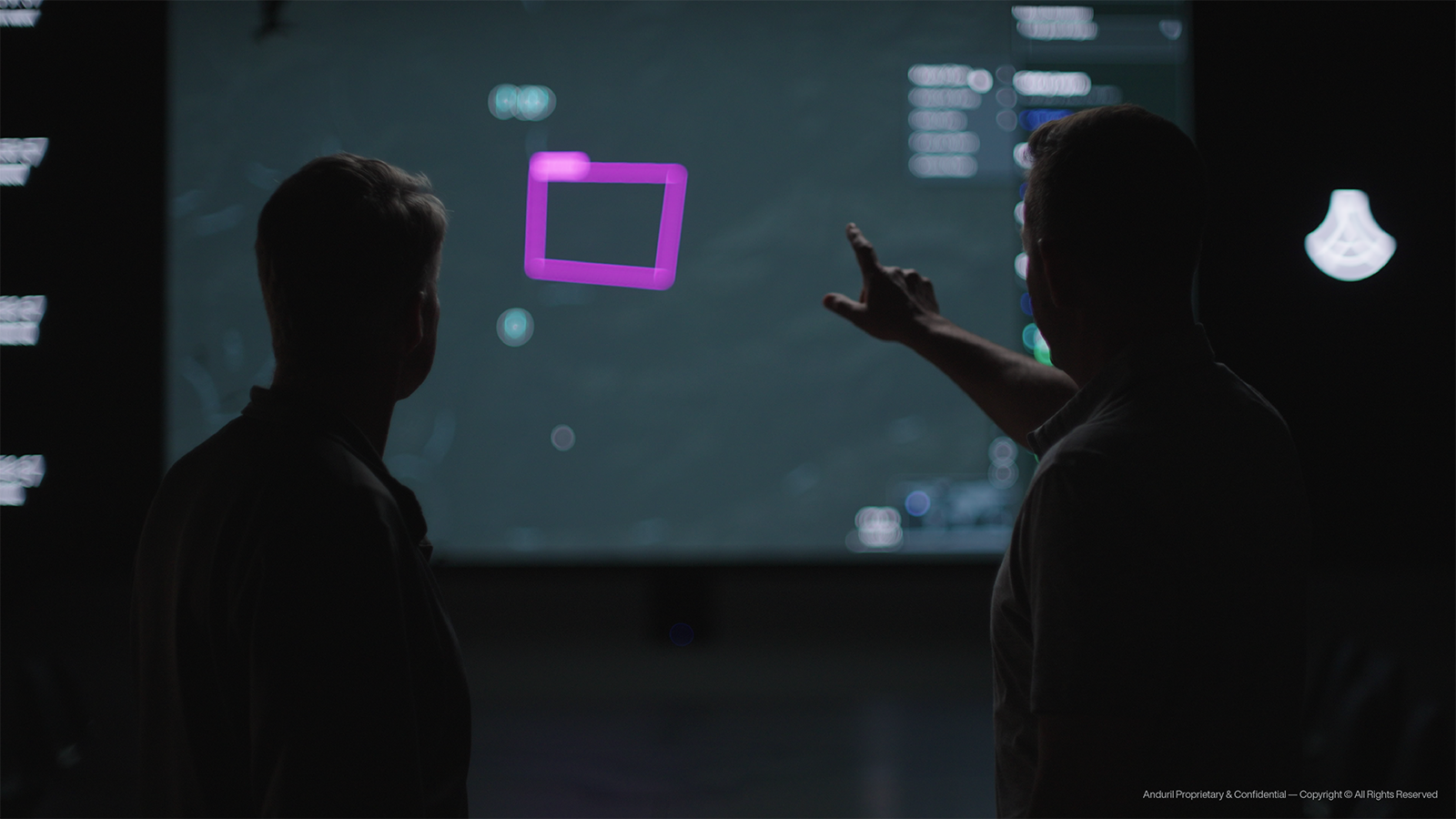
A handout photo of Anduril’s Lattice software. (Anduril)
WASHINGTON — Anduril Industries today unveiled a new software platform that the company claims will allow a single operator to control a range of autonomous systems, which company executives say will allow the Pentagon to push past limitations caused by budget and operator constraints.
“When we look at [US military] unmanned formations today, they cost way too much, there are way too many people inside, they have way too many loops,” Chris Brose, Anduril’s chief strategy officer, told reporters on Monday. “And that’s not going to scale against a competitor [China] that has four times as many people and a GDP that is approaching ours.”
Anduril’s new Lattice for Mission Autonomy builds off of the company’s artificial intelligence-powered Lattice software, the same platform used to power the counter-drone capabilities currently in use under a nearly $1 billion contract with Special Operations Command.
According to a company press release, Lattice for Mission Autonomy will allow “humans to employ autonomous systems in a way they never have before, extending reach, capabilities and situational awareness while enabling warfighters to make better decisions, faster.”
Brian Schimpf, Anduril CEO, said that there’s “no technology limitations” for the new offering. It could allow for an operator to control hundreds of unmanned systems.
The company wanted to think past the simplest parts of mission autonomy, he added.
“So there’s the basic parts of what we expect the pilot to do, which is…fly or drive the airplane. That is a part sort of everyone agrees can probably be automated” he said. “But as soon as you start getting even just a little bit above that, this is really where the true mission of these systems lies…
“So a lot of ways that we thought about is, the next leap of this looks a lot more like how are we taking all the training and tactics developed, and all those pieces we do with human pilots today…start to codify that into an intelligent piece of software that can go out and do it,” Schimpf said.
Brose or Schimpf declined to say if the company is working with the Defense Department or other government agencies on this specific capability. But Brose said that adversaries like China and Russia are probably looking at developing capabilities similar to the company’s new offering.
“I would be shocked if they weren’t working hard on exactly this kind of question, which is how are we actually going to operationalize autonomous systems for real life use,” Brose said. “And that’s the same question we’re trying to solve with Lattice for Mission Autonomy.”






















